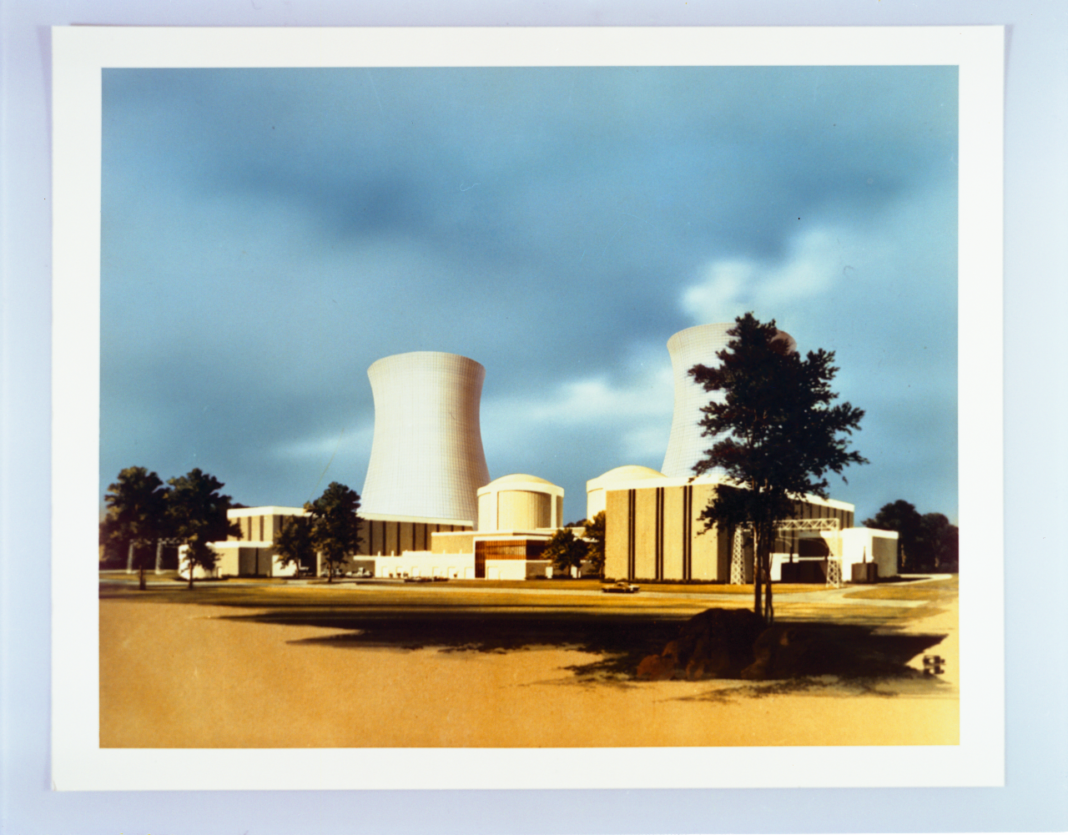by Jonathan Tennenbaum
Renewable wind, solar, hydro and biofuels cannot fill the gap
So you don’t like CO2? What you need to know, then, is that there’s no alternative to advanced nuclear power.
Concern about the climate effects of man-caused CO2 emissions has prompted gigantic investments into so-called renewable energy sources: wind, solar, hydropower and biofuels. Meanwhile, in a huge mistake, nuclear energy – a reliable CO2-free power source producing 14% of the world’s electricity – has been left far behind.
Germany provides a bizarre example, albeit not the only one. Here the government’s commitment to its so-called climate goals has been combined, paradoxically, with the decision to shut down the country’s remaining nuclear power plants by 2022.
Would it not be more rational, if we believe that human emissions of CO2 are destroying the planet, to expand nuclear energy as quickly as possible, rather than shut it down?
In December 2019 the influential German magazine Der Spiegel ran a story with the title, “Can New Reactor Concepts Save Us from the Climate Collapse?” The article reports on how numbers of international investors and firms, including Bill Gates and his TerraPower, are engaged in a race to develop advanced nuclear reactor technologies as the key to eliminating world dependence on fossil fuels – a goal that could never be attained by the so-called renewable sources alone.
Addressing readers who remain terrified of nuclear energy, Spiegel writes: “According to estimates, 800 000 people die every year from the smoke produced by coal, containing toxic substances such as sulfur dioxide, nitrogen oxides, mercury or arsenic. But concepts must also be demonstrated for how to dispose of the toxic substances contained in used-up photovoltaic cells.”
The magazine explains that “energy generation nearly always claims victims and creates some pollutants. The question is, what costs and risks are we ready to accept? What should we fear most: global warming, which is sure to come, or a possible regional reactor catastrophe? The objections to nuclear energy are justified. But in view of climate change, is it right to reject nuclear technology altogether?”
New reactor designs such as the traveling wave reactor, the molten salt reactor and small modular reactors promise to be much safer and cheaper than conventional nuclear power and have broader ranges of applications. Some could even “burn” nuclear waste as a fuel – eliminating the need for very long-term storage of radioactive material, which is a major argument against nuclear energy. Standardized modular construction would allow nuclear reactors to be factory-produced in much shorter times.
On this basis, a massive expansion of nuclear power worldwide might be accomplished within the space of 10-15 years. The rapid build-up of nuclear power in France, in response to the 1973 “oil shock,” provides a certain historical precedent.
New agenda
There is no doubt that nuclear energy is back on the world agenda, even for many of those who have been bitterly opposed to it in the past. And nuclear energy – in the form used today – still has serious problems. But new reactor concepts are on the table, which addresses those issues and could completely redefine the role of nuclear energy in the world economy.
I shall describe some of these reactor concepts in a bit of detail. But first I should try to establish clarity on a crucial point.
I believe we are facing a branching point in global energy policy. What should be the priority? Assuming it should be a goal to drastically reduce world emissions of CO2 in the medium and long term – which I don’t want to argue about here – is it wise to invest so much in renewable energy sources, as many nations are doing today? Or should we allot only a limited role to the renewables, and go for a massive expansion of nuclear energy instead?
I will not discuss nuclear fusion in its various forms, an area of great importance for the future, but whose availability for large-scale energy generation cannot be predicted with certainty at present; nor the potentiallyngame-changing area popularly referred to as “cold fusion” (better called “low energy nuclear reactions” or LENR). “Cold fusion” was the subject of a series of article already published in Asia Times.
Now let’s deal in more detail with a very big question: To what extent could so-called renewable energy replace the use of fossil fuels?
According to Bloomberg New Energy Finance, $288.9 billion was invested into renewable energy in 2018, the bulk of which went into wind and solar energy. Despite this, CO2 emissions worldwide continue to grow relentlessly.
China, for example, leads the world in the size of its investments into renewable energy, with over $100 billion invested in 2018 alone. At the same time China also leads the world in the construction of new coal power plants, which are the single biggest source of CO2 emissions by human activity. Since the start of 2018, China has brought 42.9 gigawatts of new coal-fired power plants online, with another 121.3 GW under construction and 200 GW or more in various stages of planning.
India also continues to expand its coal power capacity, with 36 GW under construction. Last July the Indian power ministry’s chief engineer declared that coal-fired power generation capacity is expected to rise by 22.4% in the coming three years. The ongoing expansion of coal power in China and India does not reflect a lack of concern about pollution and climate change; the problem lies above all in the economic, physical and technical constraints under which these nations must design their energy policies.
The simple fact is, that in the foreseeable future no amount of investment into renewables, however large, will be sufficient to eliminate humans’ dependence on coal, oil and natural gas. That is, unless we are willing to collapse the world economy.
If we are really committed to reducing CO2 emissions, then there is no way around nuclear energy, and lots of it. The reasons are elementary.
Suppose that by some means we could completely eliminate the use of fossil fuels for transport and heating. This is hardly conceivable without greatly increasing the global consumption of electricity, which can already be projected to more than double over the next 25 years. Where will all the electricity come from?
If we insist on “CO2-free” sources of electricity, then the number of realistic options is small. When it comes to large-scale power production they are limited essentially to hydroelectric, wind, solar and nuclear energy. Electricity generation from biofuels, which can claim to be “CO2-neutral”, might contribute a few additional percent.
Unfortunately, economically viable hydropower is limited to certain geographical locations, and its potential for further expansion is strongly constrained by environmental, economic and social factors as well as very long lead times for large projects. Given the projected growth of electricity demand, the share of hydropower could at best grow from 16% today, to 25% in 2050. Where will the other 75% come from?
Wind and solar power have some obvious strong points. They require no supply of fuel and their total capacities can be expanded quickly, at relatively low unit cost, as is occurring today around the world. At the same time, wind and solar energy have a fundamental drawback: their output fluctuates depending on conditions that are outside human control. This makes it impossible to fit the output curve to the demand curve, even approximately.
Solar panels produce no electricity at all at night, of course, and not much on rainy and overcast days. The electricity output from wind power installations can fluctuate wildly even from one hour to the next, and even when averaged out over a large region. In contrast, conventional or nuclear power plants provide a continuous, steady supply of electricity, at power levels which can be precisely controlled.
Quite apart from the intermittent character of solar and wind energy, the so-called renewable energy sources all suffer from the drawback of low intrinsic power density: the renewables require vastly larger areas and/or larger numbers of operating units to reach the same output as a modern, compact coal, gas or nuclear plant.
Under typical weather conditions of central Europe, for example, it takes some thousands of large wind turbines, or solar cells covering a total area of the order of 100 square kilometers, to generate the same yearly quantity of electricity as a single 1 GW conventional or nuclear power plant. Building a wind turbine capacity of 1 GW requires 50-100 times as much steel and cement as a nuclear power plant with the same capacity.
I mentioned biogas. Electricity production from biogas could be included as “CO2-neutral” in the sense that the CO2 emitted by the combustion of biogas ultimately derives from the photosynthetic capture of atmospheric CO2 by crop plants.
The World Bioenergy Association estimates that biogas has the future potential to provide an amount of energy equivalent to about 25% of that presently generated from natural gas (in all its uses) in the world economy. If 100% of that biogas were used to produce electricity – which is highly unrealistic – this would cover about 5% of today’s electricity consumption.
Large-scale biogas production – as opposed to smaller-scale utilization of organic wastes – de facto means using agricultural crops as solar collectors. Unfortunately, photosynthesis in plants is 10 times less efficient in capturing solar energy, than modern solar cells. This makes the production and use of biofuels for large-scale electricity generation an extremely resource-intensive process, requiring large land areas, water resources, machinery, transport and labor per unit output – resources that might otherwise be applied to food production and other uses.
(source: https://asiatimes.com/)
Photo credits:
https://catalog.archives.gov/id/17422270
Pubblicazione gratuita di libera circolazione Gli Autori non sono soggetti a compensi per le loro opere Se per errore qualche testo o immagine fosse pubblicato in via inappropriata chiediamo agli Autori di segnalarci il fatto e provvederemo alla sua cancellazione dal sito Qualsiasi richiesta ingiustificata verrà considerata un abuso e potrà essere segnalata alle autorità competenti











